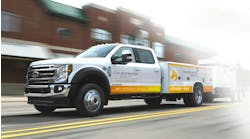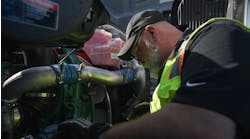Yes, you read that right. We need to untangle the supply “chains”—plural. Because there are two chains: one for goods; one for labor.
The goods supply chain
By now, all of us have had at least one encounter with the snarled supply chain for goods. The ports are clogged, the rail yards are jammed, the freight terminals are congested, and some shelves are bare.
This problem started when the forced lockdowns of 2020 brought the movement of goods to a standstill globally. Since that time, we have been working through the backlog created by the shutdown and surge generated by the reopening.
The untangling of this supply chain depends on our ability to physically move goods and little else. Already, steps are being taken to increase the hours of operation at the ports and at the major transportation and transshipment nodes.
Reinforcing the point on supply chain constraints, MacKay & Company releases a monthly publication, DataPulse Plus, where we highlight monthly data from dealers, distributors, and fleets. Since the pandemic began, we have been tracking parts shortages and the percentage of dealers and distributors that are experiencing these struggles on the front lines.
In our September DataPulse Plus (results for August), 93% of dealers indicated issues getting parts, with 53% noting that issues have remained the same. Another 47% reported worsening shortages. Shortages are seen across the board for numerous components, fluids, steel, etc.
For distributors, the picture is similar, with 85% of our distributor panel reporting parts shortage issues. Half noted that issues have remained the same and the other half indicated issues were worsening. Again, shortages are seen from bumper to bumper.
This tangle in the supply chain for goods differs from those in the past only in its scale. We have had weather-related bottlenecks, labor-related bottlenecks, and regulatory bottlenecks many times in the past. We just have never had them everywhere at the same time. We will work this out. It might be the end of 2022 before we do, but we will work this out.
The labor supply chain
The supply chain for labor is one that we usually don’t think about because it operates in the background. In order for a person to take a job, they have to be part of the labor force. In the United States, that is someone between the ages of 15 and 64 who is willing and able to work. The problem now is not willingness to work, but ability to work.
In February of 2020, just before the pandemic shutdowns began, there were 164.4 million persons in the U.S. workforce. Of those, 86.9 million were men and 77.5 million were women.
In April of 2020, at the depth of shutdowns, the workforce had dropped 4.8%, falling to 156.5 million people—83.2 million men and 73.5 women.
The latest figures from the Bureau of Labor Statistics for September 2021 show a workforce of 161.4 million persons with 85.8 million men and 75.6 million women.
Why are we telling you this? Because the workforce is currently short by 3 million compared to the start of the pandemic. How and when we get the 1.1 million men and 1.9 million women back will largely determine how and when we untangle the supply chain of labor.
Just as we have all had encounters with the kinked supply chain for goods, so too have most of us become aware of the strong demand for labor—reflected in the display of help wanted signs in front of just about every commercial establishment we pass by or patronize. Where is the supply of labor to fill those positions?
In many cases, the labor supply is stuck at home with childcare obligations that would normally be covered by school attendance. In other instances, would-be workers are reluctant to return to jobs due to health and safety concerns. And, in case you were wondering, those not in the labor force do not qualify for unemployment compensation, so the existence of those programs was never a factor in this part of the labor supply chain problem.
The bottom line is the two major problems we are facing with the supply chains for goods and labor are not going to be solved by fiscal or monetary policy, by the sermonizing of politicians, or the exhortations of the chamber of commerce. The first problem will be solved by the physical movement of the goods through the system; the second by the removal of obstacles that are keeping people, especially women, from going back into the workforce and ultimately back to work.




